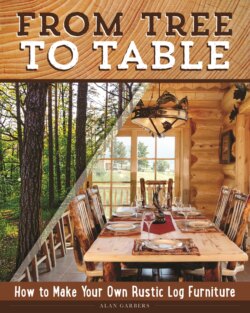Читать книгу From Tree to Table - Alan Garbers - Страница 18
На сайте Литреса книга снята с продажи.
Hardwoods vs. Softwoods
ОглавлениеTrees are divided into two classes: hardwoods and softwoods.
Basically, hardwoods are any trees with a leaf, and softwoods are any trees with a needle. So, ash, oak, and aspen are hardwoods, while pines and cedars are softwoods. But don’t assume any hardwood is going to have hard wood. Cottonwood, poplar, and aspen are all hardwoods, but their wood can be very soft and easy to cut, break, or damage.
On the opposite end of the scale, dogwood, hickory, oak, and some types of birch can be extremely hard. Ironwood, an understory type of birch, was used for wooden mallets. Hickory is still used for tool handles and ash is still used for baseball bats. Some types of oaks were used for warships in sailing days.
Softwoods are softer woods and very easy to work with. But, compared to woods such as ash and oak, softwoods are structurally weaker when compared size for size.
When it comes to making chair seats and bed rails— the part that holds up the mattress—I prefer to use clear oak. Why clear? Large defects or knots that would look great as a tabletop are weaknesses in the wood. In some cases, using such a piece as a structural member, meaning one that will hold weight, could lead to a broken piece of furniture and an angry end user.
